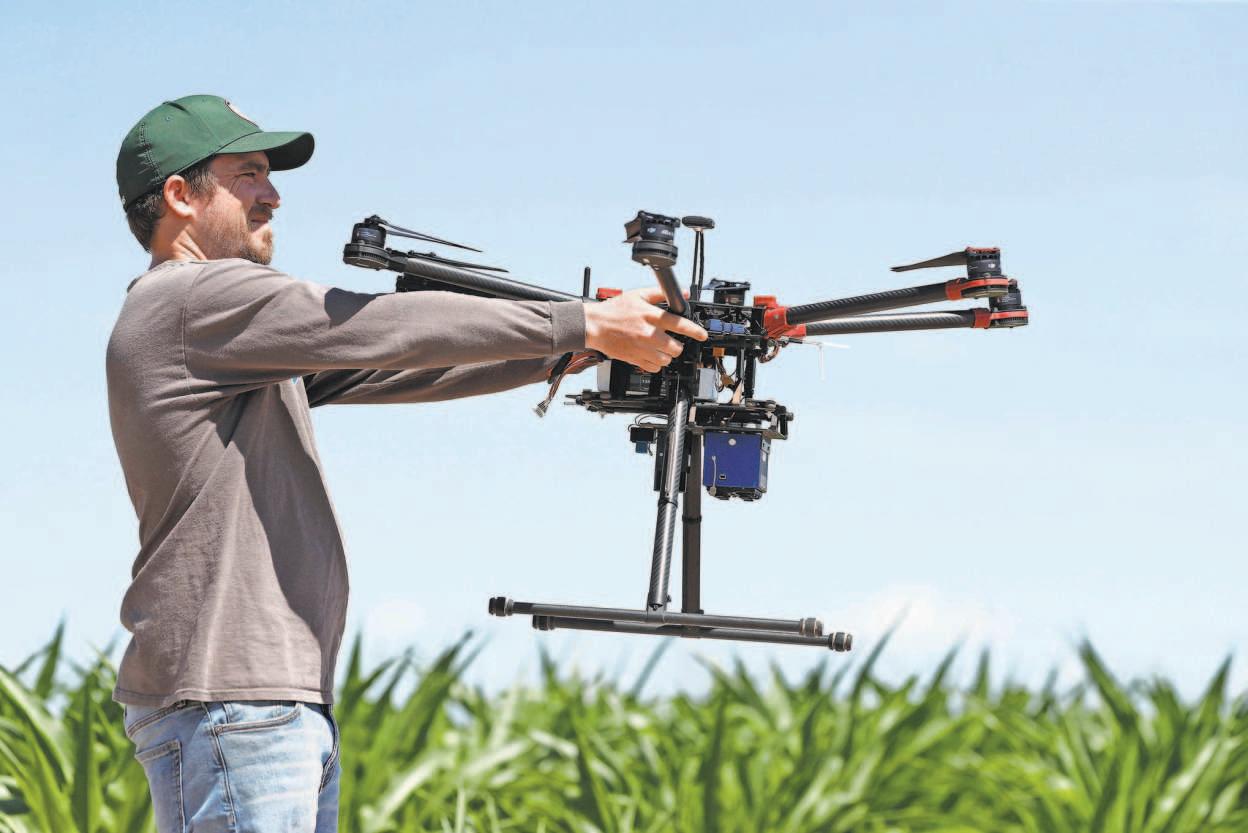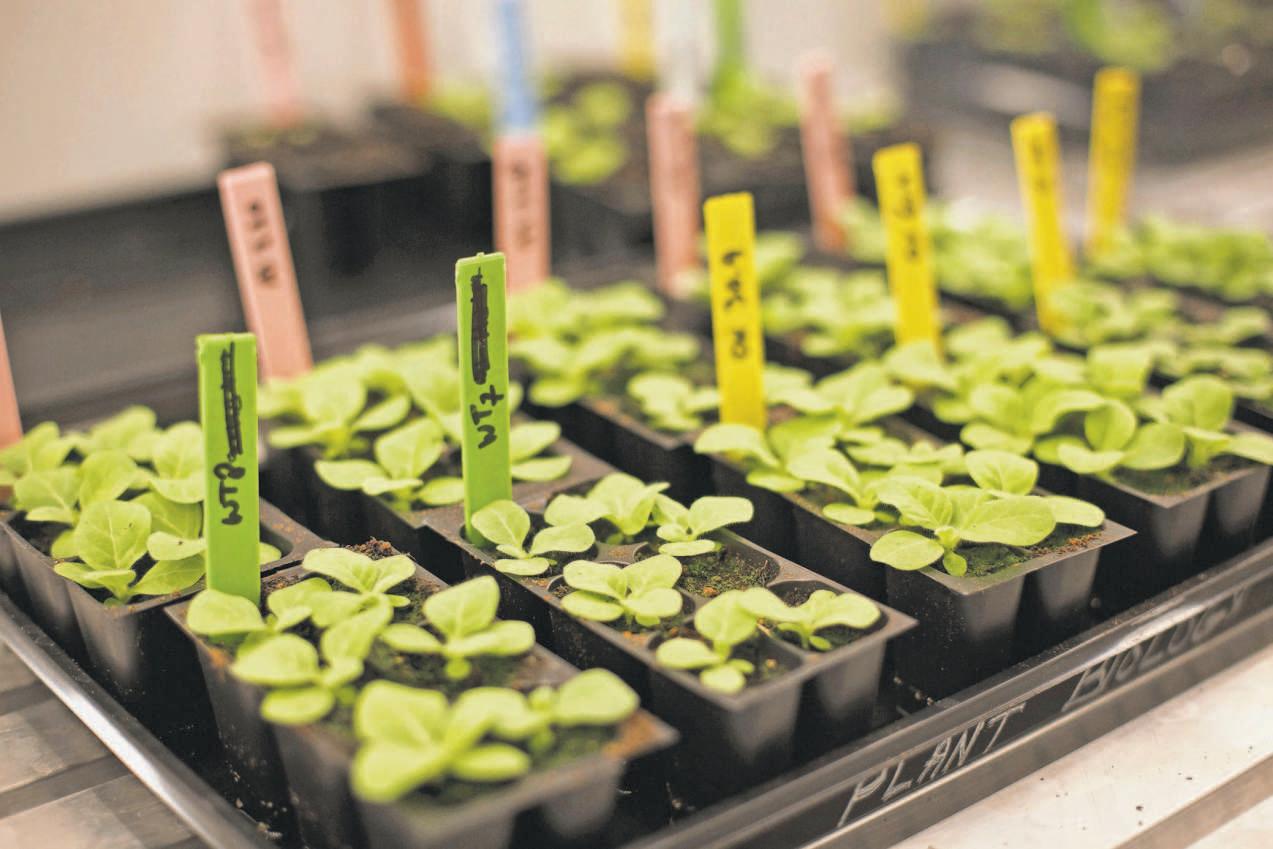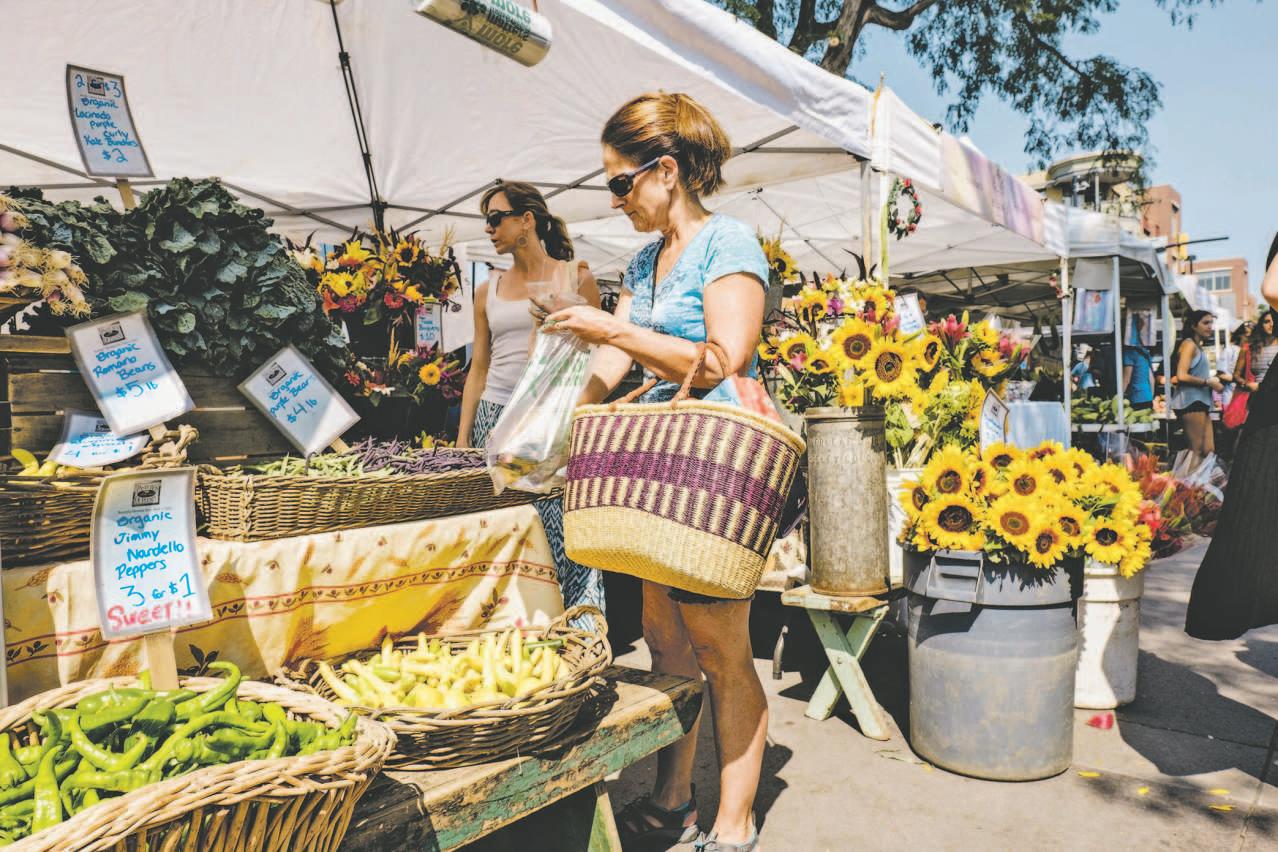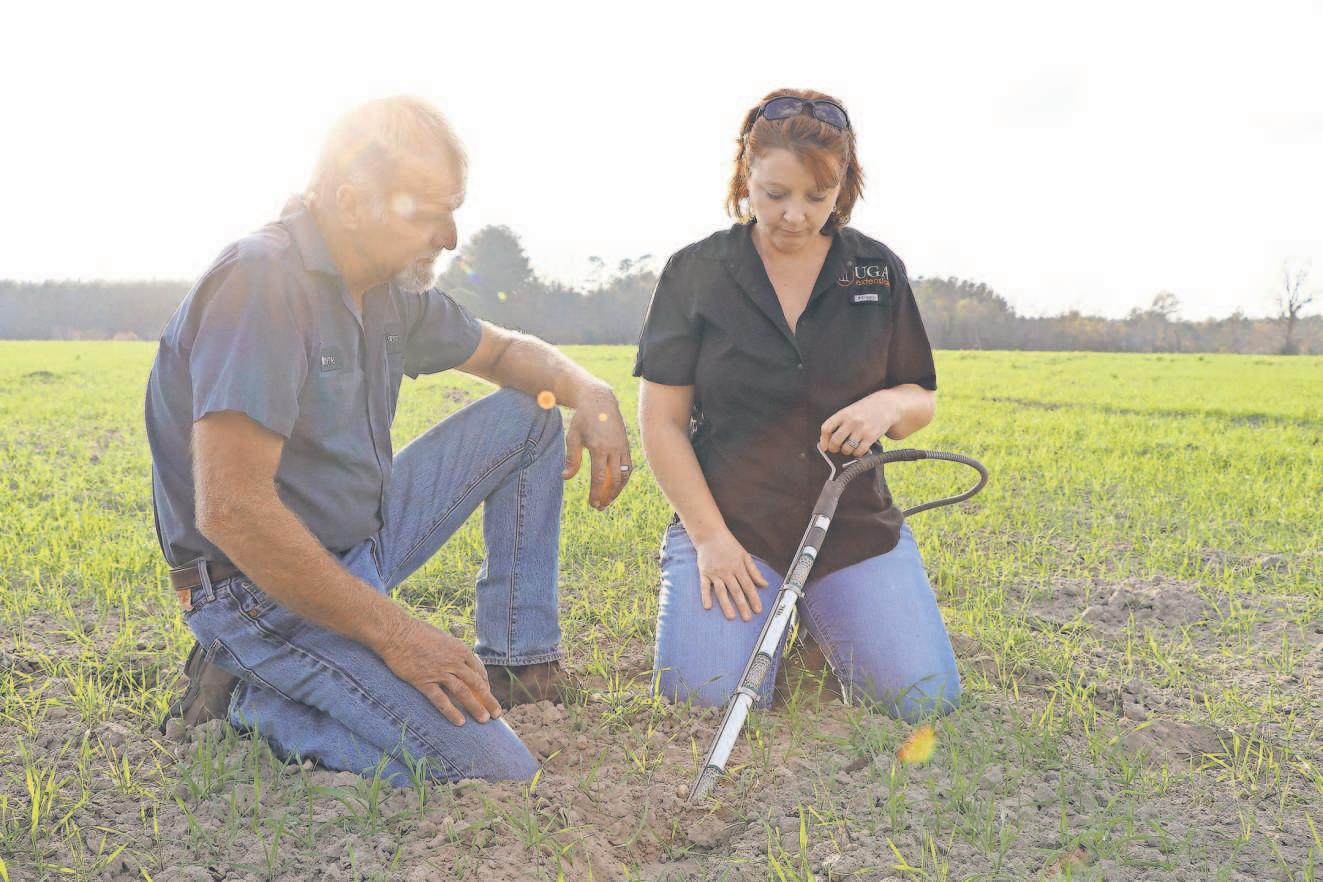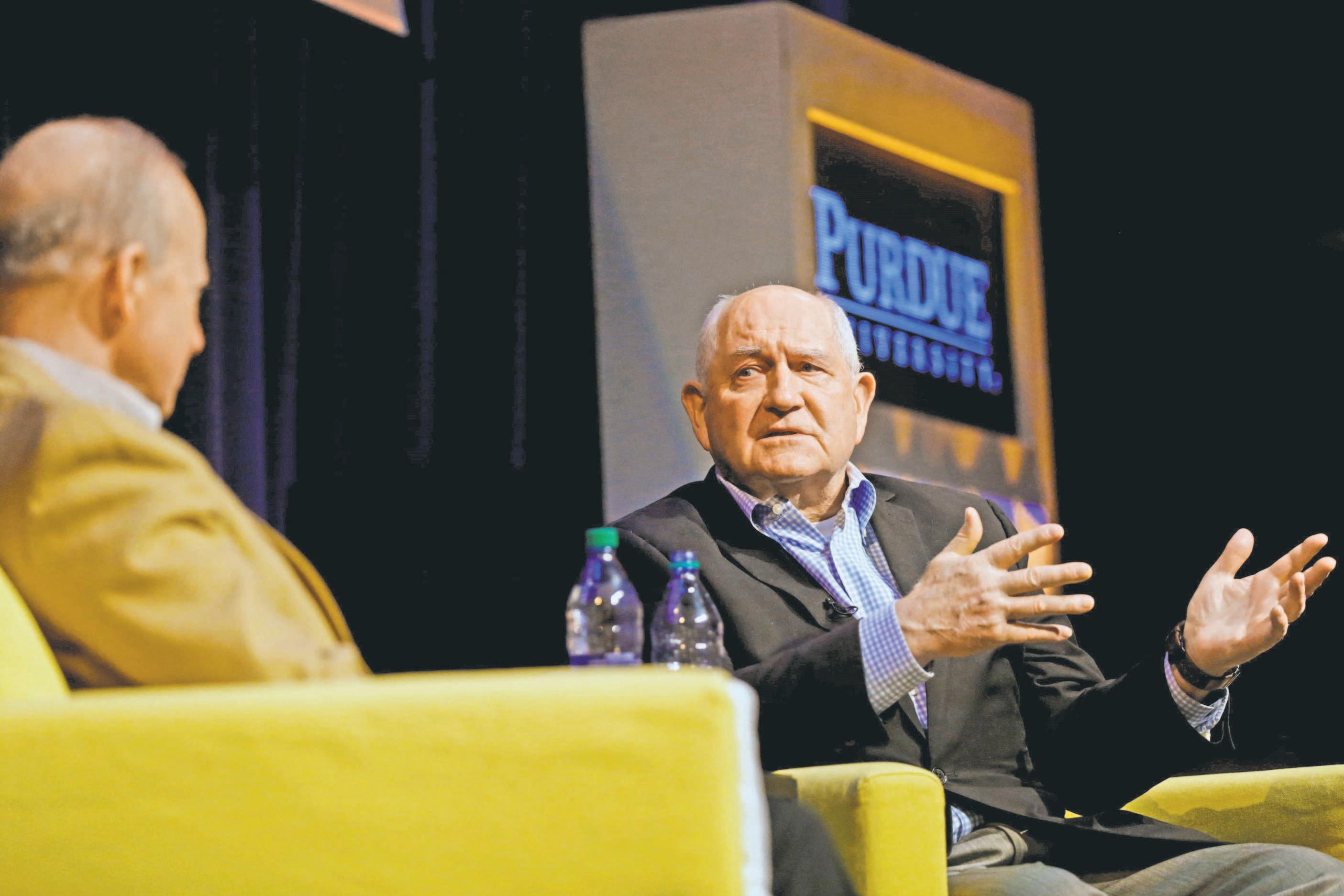
5 minute read
SONNY PERDUE
NEWS
A Conversation with Sonny Perdue
Advertisement
USDA chief champions the ‘most innovative entrepreneurs in the world’
By Brian Barth
NEWS

Perdue said the USDA is working to give farmers fair and open access to world markets.
THE THREE YEARS SINCE former Georgia Gov. Sonny Perdue was sworn in as the 31st Secretary of the USDA have been some of the most difficult for American farmers in recent memory . But, he says there are some bright spots, particularly on the trade front. Perdue shared with USA TODAY some of the recent challenges facing the industry and how he stays optimistic about the future of farming:
Looking back on 2019, what are you most proud of at the USDA and in American agriculture, generally? PERDUE: I am proud of our farmers and ranchers. 2019 was a tough year — disasters, unfair trade retaliation and low prices squeezed every farmer in America, but farmers did what farmers always do: They persevered. But, it’s 2020, and a new decade can give us reason for optimism. President Donald Trump and Trade Representative Bob Lighthizer have been traveling around the world, negotiating deals left and right. We have a phase one deal with China with commitments of $40 to $50 billion in agriculture purchases over the next two years; a Japan trade deal that expands tariff-free access for $7 billion in American products; and President Trump signed the U.S.-Mexico-Canada Agreement (USMCA), cementing increased market access to our number one and two trading partners. Q
The trade war has been top of mind for everyone in agriculture, though it seems that the recent deal with China offers a significant reprieve. What are the next steps in the ongoing process of realigning our relationship with China, and what can farmers realistically expect in the coming year?
America’s farmers know that China hasn’t been playing by the rules for a long time. And President Trump knows farmers have borne the brunt of China’s retaliation. That is why he authorized up to $28 billion in support payments and purchases over the last two years. The phase one agreement with China is a big win for our farmers, but we are continuing to look to open new markets: USDA has plans for North Africa, the Philippines, Spain, Portugal, the U.K. , Australia, New Zealand, Peru and the United Arab Emirates.
NEWS
Perdue met with local farmers and business owners at the Honor the Harvest Forum on Bunker Hill Farm in Newburg, Md., last June.
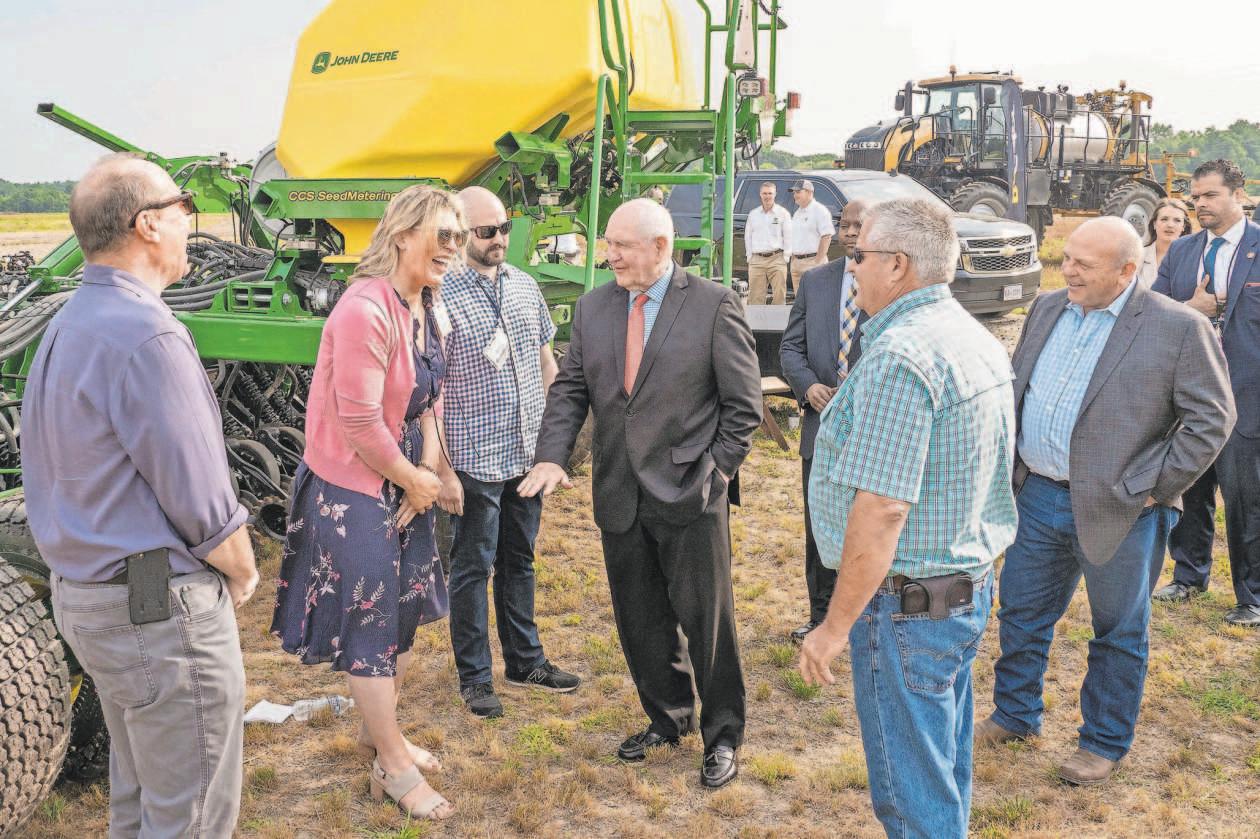
PRESTON KERES/USDA
The second biggest agriculture headline in 2019 was arguably the bad weather. Some Midwestern farms were underwater for the entire growing season. What plans are in place to support flooded farmers as this saga continues?
Our staff in local USDA service centers are eager to help connect customers with the vital services we offer, including USDA’s emergency loan program, the Emergency Conservation Program and the more than 40 direct loan, guaranteed loan, grant and technical assistance programs to help communities impacted by natural disasters. Last year, the safety net of crop insurance saw $8.1 billion in payments distributed to producers, along with $600 million in prevented planting “top-up” payments. That is in addition to the more than $890 million in WHIP (Wildfires and Hurricanes Indemnity Program) and WHIP Plus payments for natural disasters in 2018 and 2019.
Some sectors of agriculture have struggled more than others of late, most notably dairy farmers. What is the agency’s strategy for resolving this protracted problem?
One of the key ways to bolster the domestic dairy industry is to open new export markets. USDA is working closely with the dairy industry to expand export opportunities and is also fighting for policies that give our producers fair and open access to world markets. For instance, under the USMCA, Canada’s unfair “Class 6” and “Class 7” milk pricing schemes will be eliminated. The deal will also crack open additional access for American dairy into Canada, including products like fluid milk, cream, butter, skim milk and cheese. Also, the 2018 Farm Bill authorized the new Dairy Margin Coverage Program . The 2019 sign-up enrolled more than 23,000 producers who will receive $310 million. The organic industry continues to grow and evolve, but there are growing pains, such as the emergence of fraud, especially with organic grains. What steps are being taken by the agency to safeguard the integrity of the organic seal?
The USDA organic seal is — and continues to be — the gold standard for organic products around the world.
Over the last three years, USDA has implemented a robust risk-based approach to enforcement. We are using new tools and are partnering across our agencies to leverage resources departmentwide. USDA is committed to protecting the integrity of the organic seal and delivering efficient, effective oversight of organic production practices to ensure organic products meet consistent standards for all producers, domestic and foreign. Agriculture is awash in new gadgets. What emerging technology are you most excited about and why?
Farmers are some of the most innova“2019 was a tough year (with) disasters, unfair trade retaliation and low prices ... but farmers did what farmers always do: They persevered. ”
tive entrepreneurs in the world, and as I travel around the country I have come across some amazing technology. It’s hard to pinpoint just one thing I am excited about. What I’ve observed, however, is what I call the digitization of agriculture. Whether its sensor technology, optic technology or others — it’s making American farmers more productive with less inputs. Our best farmers have always had this smart algorithm on top of their shoulders that helps figure out how to do things best, but now with the type of data and digital inputs that we have, American farmers are even more productive.
With all the challenges facing agriculture, how do you keep a positive attitude at work? What are your preferred forms of stress relief?
For me, it’s spending time with my wife, Mary, our children and our 14 grandchildren. Additionally, I like to hunt. From childhood, I could often be found training my bird dogs in the fields and wing-shooting on our family farm. Hunting isn’t just a hobby for me; it’s a lifestyle.


